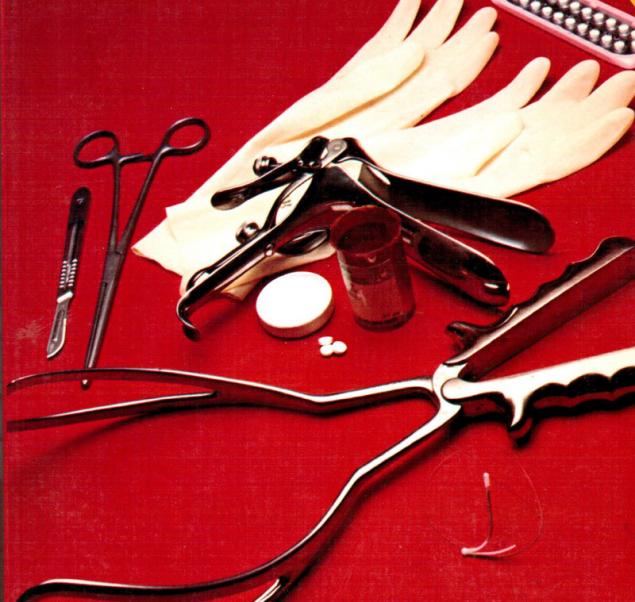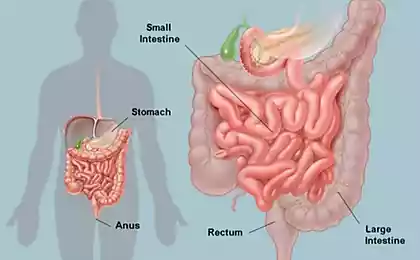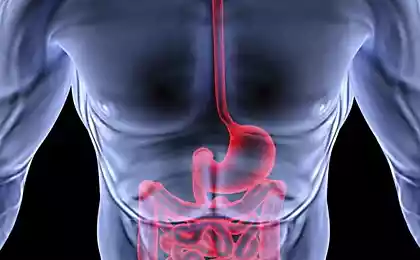472
Robert S. Mendelsohn: Male Medicine. How women are maimed

Modern medicine is a mixture of ignorance, stupidity, greed and cruelty.
Modern medicine no longer treats people. The medics are making money now. And as with any business, they care about getting more and more customers. That is why people are maimed right from birth. . .
Men's medicine. How women are maimed
Written by Robert S. Mendelsohn
Statistics show that women go to doctors 7 times more often than men. Therefore, they have a much higher risk of suffering from improper treatment. This is according to Robert S. Mendelsohn.
- What medical procedures should be avoided?
- What to do if the doctor recommends surgery?
- How to bear and give birth to a healthy child?
- Which medicines should be treated with particular care?
About the author
Robert S. Mendelsohn (1926-1988), the largest American pediatrician, was born in Chicago, Illinois. He graduated from the University of Chicago in 1951. He is known for his radical views on modern medicine. He especially criticized pediatric practice, vaccination, obstetrics, dominance in gynecology of male doctors. He opposed coronary bypass surgery, regular X-ray examinations to detect breast cancer, water fluoridation.
He taught at Northwestern University’s Faculty of Medicine for twelve years, then was an associate professor of pediatrics, public health, and prevention at the University of Illinois. In the early 1980s, he was president of the National Health Federation. He was also the national director of the Medical Advice Service at Project Head Start, but was forced to leave the position after being attacked because of his harsh criticism of schooling. He headed the Illinois Medical Licensing Committee.
Actively promoting his views, he spoke at conferences and meetings of the National Federation of Health, led the newsletter and the People's Doctor column in several national newspapers, participated in more than five hundred talk shows on television and radio. In 1986, the National Association of Healthy and Nutritional Foods honored him with the Rachel Carson Memorial Award "for his services to protecting the freedom of consumption and health of Americans." He is the author of a number of popular science books that have survived several publications in the United States and other countries.
Preface to the Russian edition
Each of us hopes for happiness, for the absence of suffering and a life without wrinkles. We women are special people in this sense. We want to have menstruation without discomfort, "safe" sex. We want pregnancy to occur according to our own schedule, proceed easily and end with a comfortable, painless birth of a perfect child. We need the baby to get the perfect amount of breast milk without damaging our breasts. We dream of staying young and beautiful to death, so that men love us, protect us, protect us. Behind all our hopes lies our fears—illness, pain, poverty, loneliness, old age, criticism, rejection, and ultimately death. Our desires know no bounds, and we grow up believing that Modern Medicine can satisfy them.
Dr. Mendelsohn had an amazing ability to destroy fear and inspire confidence. And this transformation of consciousness does not occur without exacerbation. To begin with, he had to debunk our myths so that we could face the truth. It's a painful process. Dr. Mendelssohn’s rebukes of the Institute of Modern Medicine are revolutionizing our inner attitudes, undermining our trust in doctors who promise us happiness. The most surprising thing is that Dr. Mendelssohn's accusations are as relevant today as they were thirty years ago. Women make up 80% of doctors’ patients. Their processing begins during pregnancy, when the expectant mother, perhaps for the first time, becomes convinced of the need for a large number of examinations designed not for her individually, but for an impersonal set of people.
Then she expects all possible treatment of found complications and medical birth. Later, this trend, of course, continues – with endless visits to the pediatrician for the child and to the gynecologist for the mother. This cycle repeats with each pregnancy. And after the birth of the last child, a visit to the gynecologist always find excuses: erosion of the cervix (the purpose of moxibustion), infection (read - antibiotics), thrush after antibiotics (meaning, antifungal drugs), advice on preventing pregnancy (contraception, hormones, sterilization), mastopathy (hormonal treatment), fibroids (hormones, removal of the uterus), menopause (hormonal treatment).
For Russia, Dr. Mendelssohn’s warnings are now particularly relevant in connection with the deplorable situation in obstetrics. No other developed country prescribes as many drugs and hospitalizes pregnant women as often as they do here. “Healing” often begins with a diagnosis of the threat of miscarriage in the early stages. Assuming that miscarriage sometimes occurs as a result of progesterone deficiency, such patients are prescribed treatment with duphaston (didrogesterone). It's a synthetic hormone. In Russia, it is not clear who is shown it and who is not. In other countries where this drug is used, it is prescribed only after confirmation of low progesterone levels in a woman with symptoms of threat. But since its effectiveness has not been proven, most doctors have refused it. In addition, it was withdrawn from production in the UK in March 2008 due to “commercial reasons” (unprofitable sale due to lack of proof of effectiveness).
Dr. Mendelson. I would be glad that his instructions are now available to Russian women. He respected women as the most highly qualified family health experts. Of course, he made them respect themselves so that they could learn to enjoy each stage of life without having to stop being themselves. This is the expression of true feminism – not the renunciation of feminine traits in favor of imitating men, but the emphasis on all that is natural and God-given in us, which is the nature of women. I deeply hope that Dr. Bob will inspire you to rediscover the feminine that you will discover at every stage of your life.
© Molly Kaliger
From Robert Mendelsohn’s book “Male Medicine.” How women are maimed
It's gonna be okay, leave it to me. The birth of children would be much less painful, dangerous and humiliating for women if obstetrics were simply abolished. All obstetricians, with the exception of a handful of doctors who encourage natural birth, are guilty of perpetuating the unhealthy, unscientific disgrace of medicine. As you now know, I have little respect for Modern Medicine in general, but obstetrics makes me cringe. It is the only medical specialty in which almost everything a doctor does is medically unjustified and terribly wrong. I’ve said before that doctors have turned pregnancy — a natural, normal, feeling-filled event — into a nine-month illness. This idea sounds radical until you know what machinations preceded the creation of this medical specialty.
Throughout history, children were born to their mothers, not doctors, in the presence of a relative or midwife. Midwives still help most mothers in many of the world’s most developed countries. Their success, measured by infant and maternal mortality rates, surpasses that of American obstetricians who have perverted childbirth with ritual procedures that endanger both mother and child. Obstetricians also deny mothers and fathers the joy that natural birth can bring.
Obstetrics, including American obstetrics, is vicious because it is rooted not in medical science but in historical absurdity, in male conceit and ordinary old-fashioned greed. It originated in Europe when, in the eighteenth century, barber surgeons realized that they were losing countless opportunities to increase their income, and began to conspire to take birth care from midwives. This was not easy, because midwives were very talented assistants in childbirth and showed their talents for thousands of years.
Yes, maternal and child mortality was tragically high at the time, as today's obstetricians like to emphasize, but only because Ignaz Semmelweiss had not yet shown that infections were caused by germs transmitted to mothers from doctors. It is easy to forget that maternal and child mortality rates doubled when barber surgeons took over. Mothers placed in hospitals began to suffer from postpartum sepsis, because doctors rushed from beds and autopsies to labor, without bothering to wash their hands.
Physicians had no reason to extend their activities to childbirth, so long as childbirth was perceived as a non-medical physiological function that women could perform on their own - with help only slightly greater than mere emotional support. To put their paw on these patients, doctors had to turn childbirth into a disease. They did this by obstructing the natural process and creating medical interventions that only they could perform. For safety, they slandered midwives, branding them as witches, if through their fault mothers or children died, tortured and burned them at the stake. The first witch to be hanged in the American colonies was a midwife who was accused by doctors.
A landmark event in the long medical campaign to seize power over childbirth was the invention of obstetric forceps by Peter Chamberlain in 1588. He and three generations of his family have earned fame for having had difficult labors using the simplest form of this tool, which is now used too often, and often for evil. They kept their invention secret from other doctors and mothers, working under sheets and carrying forceps in a locked wooden box. Their use was the first breakthrough of obstetricians in the direction of technical means, glorified by them as proof of their superiority over midwives. No one counted how many delicate tiny heads they crushed. Chamberlain set an example of the technological intervention and its adverse effects that dominate midwifery in the United States today. However, it was not forceps that became the breakthrough in obstetrics, which took away childbearing from both midwives and mothers themselves.
The turning point was the abolition of the delivery chair in which women gave birth, allowing natural contractions and gravity to do their job. Doctors began to lay mothers on their backs, with their knees bent, on high tables. This made independent childbirth almost impossible and ensured that the woman in labor would need the help of a doctor. Lithotomic position (the position of lying on the back, in which the legs are raised, separated to the sides and fixed) serves as the basis for most interventions that have become common in modern obstetric practice. This effectively took away all control of the birth process from women, which became infinitely more difficult, risky and painful, and gave obstetricians countless seemingly reasonable reasons to come to mothers' aid.
As one doctor noted in the journal Pediatrics, obstetricians are like firefighters. Both save people. The only difference is that firefighters don’t start fires.
Given the radical transition from the delivery chair to the supine position, you might think it was the result of careful medical observation. Incredibly, it's not. The custom of laying mothers flat on their backs was introduced to satisfy the sexual perversion of King Louis XIV of France! King Louis seemed to enjoy peeping from behind the curtains as his mistresses – and he had many – gave birth. He was upset that the picture wasn't complete when women sat in delivery chairs. At a moment of inspiration, he used his royal influence to persuade a male obstetrician to improve his visibility. Then the woman was placed on a flat table, with her legs bent at her knees, and King Louis was immensely pleased with the result.
Unsurprisingly, other doctors soon concluded that what is good for the royal court must also be good for everyone. They established a lithotomical position in practice, apparently convinced that Newton and Kepler were wrong and that the law of gravitation was abolished by royal decree. This episode might have been an amusing note in the history of medicine if this preposterous position had not continued to be used by obstetricians in labor today. The only improvement that has been made so far, and which Louis XIV would certainly have appreciated – but certainly not the mother – is the use of stairways that fix a woman’s legs.
Lithotomic position can not be justified for any other reasons than the convenience of the doctor. From the point of view of the woman in labor, in her agonizing position, childbirth could only be more difficult if she were hung by her legs. As early as 1933, Mengert and Murphy in their extensive experimental study recorded intra-abdominal pressure at the time of maximum effort during childbirth. Their study included more than 1,000 observations of women in different poses. They found that the strongest pressure came from sitting. This was due to the correct distribution of the weight of the abdominal organs and an increase in the effectiveness of muscle work. In 1937, another researcher presented X-rays and measurements indicating that squatting changes the shape of the pelvis in the most favorable way for childbirth.
I am not aware of any study that has ever refuted the fact that a woman should not be confined during childbirth to lying on her back. And yet, with a few exceptions, mothers in the United States still lay on their backs, fixing their legs in stirrups. Since all of this obviously has no legal medical basis, you may wonder why doctors keep making women give birth strapped and stretched on their backs.
In the absence of any reasonable explanation, I will give you the only answer that makes any sense. This pose creates pathology and makes normal birth abnormal, providing the obstetrician with about 95% of the reasons for his existence. The traumatic situation that the doctor creates provides him with a consistent series of opportunities to be needed and quench his thirst for intervention. At the same time, the mother began to play the role of a statistician in the drama of the birth of her own child, and the father will be lucky if he is allowed to act at least as a stage set.
Trouble in a pregnant woman often begins before she is in the hospital. Even if she and her husband had to speed up to get there faster, as contractions have become severe and frequent, they often abate suddenly – and even stop – the moment a woman walks into a hospital. This reaction is so common that it even has a name – weakness of labor – and those who have studied this question believe that it is the result of fear.
When a woman enters the hospital, her anxiety increases as she is instantly deprived of her husband’s support. She is put in a wheelchair and taken to the prenatal ward, leaving her husband behind in the emergency room. He can't go with her because he's needed to perform the most important hospital rite - reassuring the administration that he can pay the bill. Every doctor, unblinked by his own education and prejudice, knows that fear delays labor and makes it more difficult.
I have had the pleasure of witnessing – and even in my own daughters – the unstressed, rewarding experience of what a drugless natural home birth can be. Fear is destroyed by a cozy, familiar environment and caring support and care of family and friends. However, every aspect of modern obstetric practice aims to isolate the mother in an unfamiliar setting and increase her anxiety.
The prenatal ward in which the woman is placed has the appearance of a prison cell, and for all practical reasons it becomes such. A typical empty, gloomy cell that barely accommodates a metal washing table and a hospital bed. Separated from her husband, the patient stands here, frightened and alone, executing commands from an overworked and often indifferent and irritated nurse. She is offered to undress and pull on an inappropriate size hospital shirt, which is tied with ropes and swings on her back, which does not strengthen morale. The woman is then ordered to get into the bed.
These seemingly harmless actions decide the fate of the woman in labor, because now she will be tied to a bed until she is transported to the maternity hall. She will be denied freedom of movement and banned from exercises that could ease tension, reduce anxiety, speed up labor and reduce or relieve pain. Her baby will be at risk of injury or death due to lack of nutrition and oxygen, which can be caused by lying on her back, and the dangers of treating the mother with medication.
The pain will increase, and therefore the patient will be prescribed medications that will delay and delay labor. Birth will be stimulated by puncture of the membranes, increasing the risk of infection and damage or death of the fetus. The woman will be made even more immobile by installing devices for intravenous infusions to keep the vein ready for medication and nutrients, because she will not be allowed to eat and drink.
A monitor for monitoring the fetus is fastened to her abdomen or inserted into the uterus, screwing it into the scalp of the child to watch for fetal injuries that can cause the intervention of an obstetrician. Eventually – and usually for the convenience of a doctor – she will be prescribed oxytocin to speed up labor, which will cause titanic contractions of the uterus so strong that it can harm the fetus.
The pain of a woman in labor caused by such treatment becomes so unbearable that she is given painkillers that paralyze the lower part of the body. Now a woman can no longer feel contractions, and she must be told when it is time to push. And finally, the unfortunate woman is transported to the maternity hall, her legs are fixed in stirrups and her episiotomy is done. The doctor brings the baby into the world, because the woman in labor is no longer able to do it herself, and most often with the use of forceps, because he does not want to wait for nature to do its job.
At this point, the mother’s participation in the “miracle of birth” ends.
The doctor hastily cuts the umbilical cord, not allowing it to pulsate, because of which the baby's blood returns to the mother. It is this mixing of blood that causes erythroblastosis (rhesus conflict) in the next child. The obstetrician pulls the umbilical cord to speed up the birth of the placenta, increasing the risk of bleeding and the likelihood that pieces of the placenta will remain in the uterus. He then has to enter the uterus to catch these pieces.
A woman’s risk of infection, already increased by multiple vaginal examinations, is even higher. Then the doctor must correct the damage to the perineum that he caused by making an episiotomy. As I will show later, this can cause sexual distress. In conclusion, crossing out everything that forced the woman to go through these severe ordeals, the child is immediately taken to the neonatal unit, and the mother is taken to the postoperative ward to allow her to sleep from the effects of the drugs.
Is that motherhood? Is that medicine? .
Source: en-an.info/%D0%BD%D0%BE%D0%BE%D0%BE%D0%D1%81%D1%82%D0%B8/%D1%81%D0%BE%D0%B2%D1%80%D0%B5%D0%D0%BD%D0%BD%D0%B0%D0%D0%B0%D1%8F-%D0%D0%B0%D0%D0%D0%B0%D0%D0%D0%B0%B0%D0%D0%B0%B0%D0%D0%B0%B0%B0%D0%D0%D0%B0%D0%D0%B0%D0%D0%D0%B0%B0%D0%B0%D0%D0%B0%D0%D0%B0%D0%D0%D0%D0%D0%D0%B0%D0%D0%B0%D0%D0%D0%B0%D0%D0%D0%D0%D0%B0%D0%D0%D0%D0%D0%B0%D0%D0%D0%D0%D0%D0%D0%D0%D0%D0%D0%D0%D0%
13 ways to make Christmas toys with their hands
Boredom for the sake of: how useful is the lack of interests






















